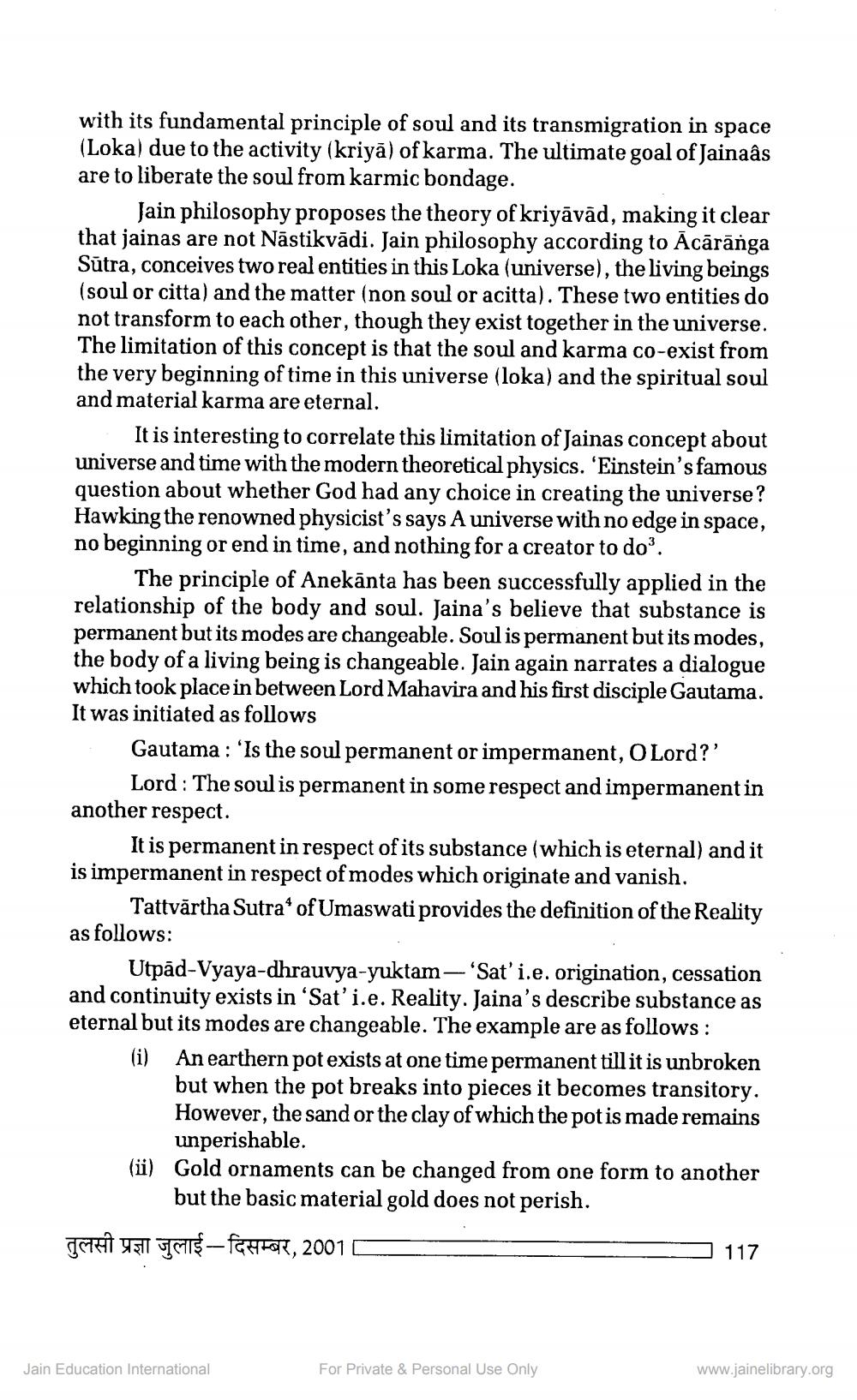________________
with its fundamental principle of soul and its transmigration in space (Loka) due to the activity (kriyā) of karma. The ultimate goal of Jainaâs are to liberate the soul from karmic bondage.
Jain philosophy proposes the theory of kriyāvād, making it clear that jainas are not Nāstikvādi. Jain philosophy according to Acārānga Sūtra, conceives two real entities in this Loka (universe), the living beings (soul or citta) and the matter (non soul or acitta). These two entities do not transform to each other, though they exist together in the universe. The limitation of this concept is that the soul and karma co-exist from the very beginning of time in this universe (loka) and the spiritual soul and material karma are eternal.
It is interesting to correlate this limitation of Jainas concept about universe and time with the modern theoretical physics. 'Einstein's famous question about whether God had any choice in creating the universe? Hawking the renowned physicist's says A universe with no edge in space, no beginning or end in time, and nothing for a creator to do'.
The principle of Anekānta has been successfully applied in the relationship of the body and soul. Jaina's believe that substance is permanent but its modes are changeable. Soul is permanent but its modes, the body of a living being is changeable. Jain again narrates a dialogue which took place in between Lord Mahavira and his first disciple Gautama. It was initiated as follows
Gautama : 'Is the soul permanent or impermanent, O Lord?'
Lord : The soul is permanent in some respect and impermanent in another respect.
It is permanent in respect of its substance (which is eternal) and it is impermanent in respect of modes which originate and vanish.
Tattvārtha Sutra* of Umaswati provides the definition of the Reality as follows:
Utpād-Vyaya-dhrauvya-yuktam— 'Sat'i.e. origination, cessation and continuity exists in ‘Sat'i.e. Reality. Jaina's describe substance as eternal but its modes are changeable. The example are as follows:
(i) An earthern pot exists at one time permanent till it is unbroken
but when the pot breaks into pieces it becomes transitory. However, the sand or the clay of which the pot is made remains
unperishable. (ii) Gold ornaments can be changed from one form to another
but the basic material gold does not perish. TETET UFI UCINE — fattore, 2001
117
Jain Education International
For Private & Personal Use Only
www.jainelibrary.org




